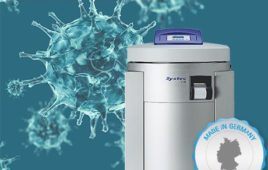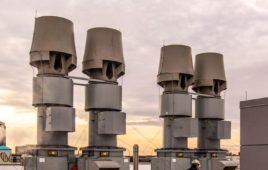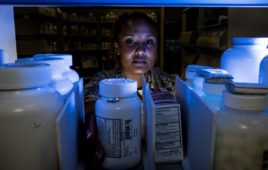NEARLY EVERY USE WE MAKE OF CHEMICALS is affected by local, state, and federal environmental regulations about emission of volatile organic compounds (VOC).Consider that:
- Cleaning medical implants with Isopropyl Alcohol (IPA) has one set of consequences because IPA is not VOC-exempt in the U.S.
- Flushing MEM internals with acetone has another set of consequences because acetone is VOC-exempt in the U.S.
This editorial is about what a change in U.S. policy regarding regulation of VOC might mean, and what you might want to happen.
A Time for Science
In the U.S., environmental regulations are derived from practical and political needs and science. Academic scientific research into atmospheric chemistry has been coordinated for the last seven-odd years by a public group with diverse backgrounds.
Recently, I attended the Research Reactivity Work Group meeting (RRWG, May 24 – 25, 2005, U.S. EPA Laboratory, Research Triangle Park, NC). The meeting’s purpose was to review science related to computer modeling using kinetic data about the formation of atmospheric pollution. The conclusion of the group was that the quality of the evolved science is acceptable to present it to the U.S. EPA for use in developing new policy and regulations.
A Time for Policy
Management of VOC by the U.S. EPA was first established more than a quarter century ago. The policy protocol is binary. A chemical is a VOC or it is not. VOC classification is based on measured (and calculated) reactivity with UV light. This is the common mechanism by which oxides of nitrogen, oxygen, water vapor, and VOC combine in many reaction pathways to produce ozone or ground-level smog.
Many firms doing critical cleaning and other high-value work have been hamstrung by the paucity of choices compliant with this regulatory approach. Essentially all choices of emitted chemicals are regulated as VOC, without regard to their relative potential to generate smog.
A new policy is needed to cope with current practical and political needs:
- Concern about smog
- Ground-level ozone (8-hr O3) [1] and particulate matter in cities such as Houston
- Managing sites emitting hundreds of compounds
- Replacing gasoline with liquefied petroleum gas (LPG)
- Effect of aerosols
- Selection of chemicals for use in industrial applications (medical, pharmaceutical, cleaning, etc.)
Wither Solvent Substitution?
Will it include solvent substitution—the opportunities to swap chemicals less reactive with UV light for those which do the same job and are more reactive? Today, there is no draft rule around solvent substitution for cleaning or metal finishing work. Such a scheme would not replace the existing Reasonably Available Control Technology (RACT) standard with something less restrictive. Solvent substitution would have to complement RACT, not replace it.
Be Careful About What You Wish
Adoption of a SIP or federal policy enabling solvent substitution would allow users to select chemicals they use based on any performance parameter. They would not be limited in many areas to using only VOC-exempts, but, they would be limited to emission of a certain amount of smog-formers. That limit would be the product of a measure of reactivity times emission rate.
- With the binary system, one can emit VOC-exempts in unlimited amounts without restriction. But only a few chemicals are allowable. To some, it seems as if they are all flammable or expensive (though that’s not true).
- With a solvent substitution system, one could still flush with acetone but there would be a limit on how much could be emitted. Users might swap acetone for IPA because IPA is only about 70% more reactive with UV light than acetone, is much more compatible with familiar soils, and has a slightly higher flash point.
Your Voice
These policy decisions are being formulated by U.S. EPA over the next six to twenty-four months. If you favor a solvent substitution system for your operations to enable more options with emission limits that do protect the environment, speak up now! Contact your state environmental agency. Communicate your questions or opinions to Bill Johnson, EPA Environmental Engineer at [email protected].
But be sure you really want that for which you ask!
References
1 Ground level ozone is that which affects human breathing, not that in the stratosphere. The “8-hr” refers to an 8-hour weighted average of sample measurements.
John Durkee is an independent consultant specializing in critical cleaning for contamination control. Contact him at PO Box 847, Hunt, TX 78024 or 122Ridge Rd. West, Hunt, TX 78024; 830-238-7610; Fax 612-677-3170; or [email protected]



